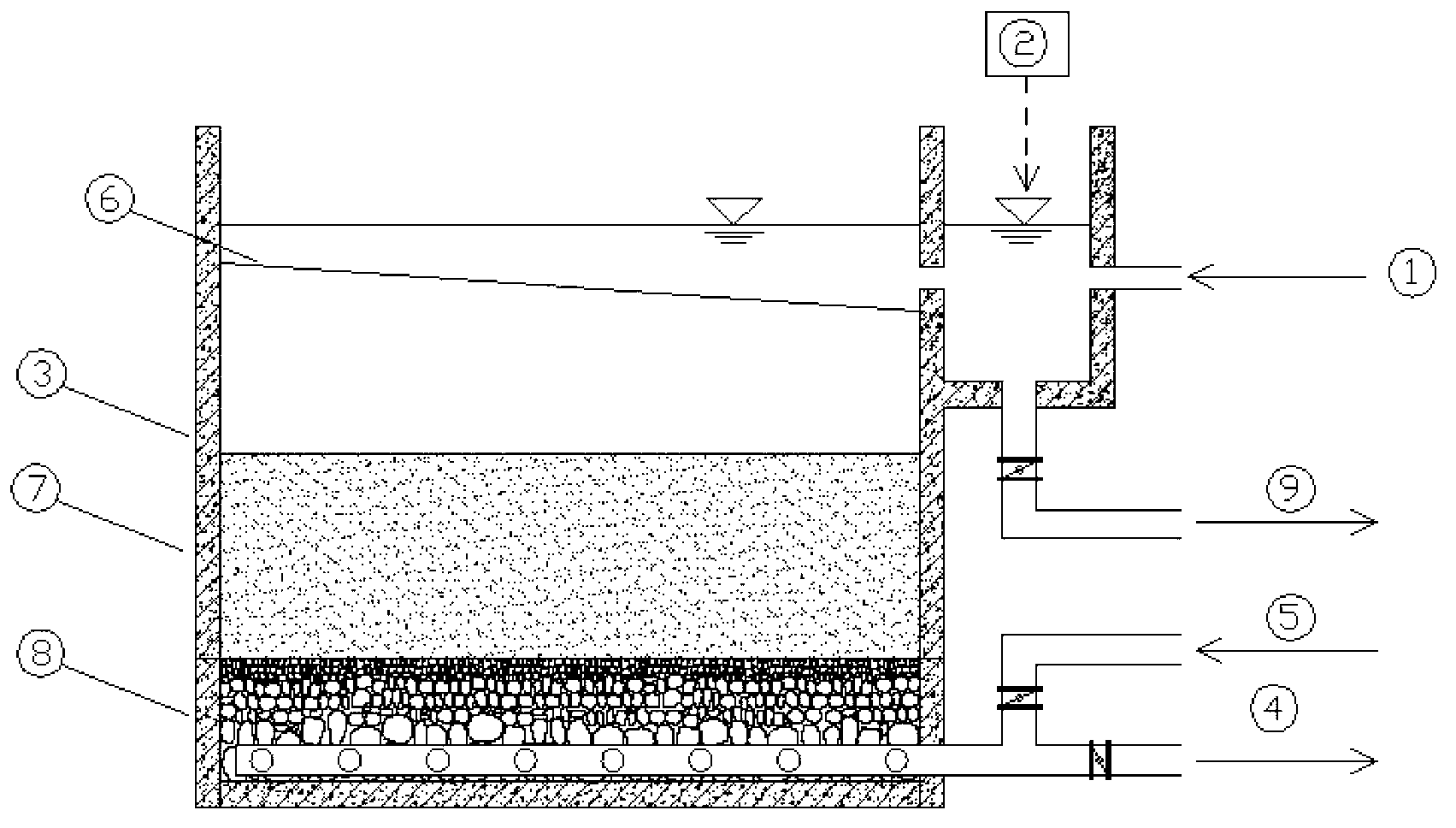Method for biologically treating cadmium-containing wastewater
A biological treatment and wastewater technology, applied in the field of water treatment, can solve the problems of poor system stability, poor removal effect, long treatment time, etc., and achieve the effects of no secondary pollution, low treatment cost, and simple operation.
- Summary
- Abstract
- Description
- Claims
- Application Information
AI Technical Summary
Problems solved by technology
Method used
Image
Examples
Embodiment 1
[0027] Raw water Cd 2+ The concentration is 12mg / L, COD / SO 4 2- =1.2, ORP=-108mv, pH is 7~8, temperature is 16~20℃, the carrier of the anaerobic biological filter is zeolite, the particle size is 1~1.25mm, the thickness of the filter layer is 1.2m, and the supporting layer is pebbles , the particle size is 5-15mm, and the thickness is 0.3m. The total amount of bacterial suspension of sulfate-reducing bacteria is 20L. After concentration, the bacterial suspension is 50ml, and the concentration of sulfate-reducing bacteria is 10 8 individual / mL. According to the volume ratio of 1:200, 50mL of the concentrated solution of sulfate-reducing bacteria and 10L of zeolite were made into a carrier filler with biological activity by bacterial embedding and immobilization technology, and added to the filter. The filtration rate of the filter is 0.4m / h, the hydraulic retention time is 3h, and the backwash intensity is 10L / m 2 s, the backwash lasts 3 minutes, and the backwash cycle is ...
PUM
 Login to View More
Login to View More Abstract
Description
Claims
Application Information
 Login to View More
Login to View More - R&D
- Intellectual Property
- Life Sciences
- Materials
- Tech Scout
- Unparalleled Data Quality
- Higher Quality Content
- 60% Fewer Hallucinations
Browse by: Latest US Patents, China's latest patents, Technical Efficacy Thesaurus, Application Domain, Technology Topic, Popular Technical Reports.
© 2025 PatSnap. All rights reserved.Legal|Privacy policy|Modern Slavery Act Transparency Statement|Sitemap|About US| Contact US: help@patsnap.com

